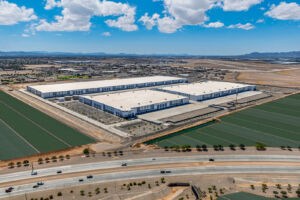Ever since technology has clenched its root in our lives, one cannot think of accomplishing a task without indulging its use in it. Over the past 40 years, technology has been aiding every field of life, from schooling to hospitals, stores, and even large business firms appear to be dependent on technology and informatics. Hospitals are one of the important needs of any country or society to provide a better healthcare system to its citizens and to meet the basic human needs of mental, physical and emotional well-being.
Inventions and researches being conducted daily along with advancement in education and learning domains. Health informatics degrees have also been introduced, opening doors for people to be not only equipped with knowledge but with skills and information of using tools to improvise the standardization, dispensing and managing stock record, orders requisition, labeling and maintaining the records of prescriptions they have made sales to.
In addition to the systematic organization of daily tasks, this field has opened better job opportunities with the inclusion of heavy IT components and skills to operate and handle such a system. Also, this field has vast areas for professional opportunities. The pharmacy informatics salary has also been reported to be close to the average salary of a traditional pharmacist per annum. One might question how technology has made the pharmacy better; here are a few examples that will provide an insight into the beneficial use of technology in pharmacy.
Medication therapy management
Medication therapy management (MTM) refers to the provision of a broader range of healthcare services by pharmacists. It includes comprehensive reviews on medications, an adjustment in immunization drug dosages, reconciliation, ordering and reviewing lab results. MTM is seen as essential to care delivery, adherence to medication, and improving patient outcomes among patients suffering from chronic diseases, cutting costs while improving the quality of patient care and safety. It also requires information through Health information exchanges (HIEs). It allows pharmacies to communicate with physicians and the patient care team assuring a better quality of healthcare services.
Pill counters
Back in 1980s pill counting was thought to be one of the most draining tasks. The reason being, pharmacists had to count pills on a counter tray and stack them in bottles with expected errors in counting with use of technology implementation of machines, which are engineer specifically to count the pills as per requirements of individual dosage has made this task easy by reducing the amount of workforce required to count the pills with accuracy.
Preventing substance abuse
Previously it was difficult to keep track of the usage of opioid-based painkillers and its purpose as people were easily misusing the prescriptions for their addiction. After the installment of data analytics systems in pharmacies, it has helped the government on a larger scale to keep a track record of such sales and demands thus keeping a close eye on substance abuse and aiding in prompt preventive measures to stop its prevalence.
Machine-readable barcoding
The technology has been shown to improve the safety and efficiency in the healthcare system by facilitating the accurate identity of medicines, reconciliation, logical verification and the patients to whom they have administered. Barcode reading machines are also used to improve the efficiency of drug storage, and it is dispensed, in the verification of ingredients when sterile preparations are compounded in pharmacy.
Tele-pharmacy Services
People living in rural areas where healthcare services are not that much effective nor they have a properly developed pharmacy can easily avail better healthcare services by filling the prescription forms online by using internet connections and their prescription can be mailed to them at their doorsteps. It can also provide the benefit of being in direct contact with a pharmacist to consult their concerns regarding medical prescriptions and medical condition.
Better and effective communication.
One of the major impacts of technology use in pharmacy is that it has helped in reducing the miscommunication between pharmacists, physicians, and patient care providers. It has also made it easy for the people to be aware of the sale prices, effective prescriptions and their dosage.
CONCLUSION:
Observing the rapid advancements in the field of science and technology, pharmacies need to adapt innovative technologies and installment of advanced equipment to meet the standard needs of better healthcare services. Technology offers hospital pharmacists to counsel more patients by giving them in detail information about their prescriptions, dosages, and their uses. Using automated technology can also improve patient care safety by reducing medication errors, maintaining patient’s medication records. Medicines like morphine and opioid painkillers tend to cause addiction if used beyond the suggested dose, pharmacies using technologies can play a vital role in preventing substance abuse. Moreover, it can put a stop on the misuse of prescriptions by having a computerized record of medicines issued to the individual. New systems are enabling pharmacies to provide better resources to their employees, which will also help in improvising better customer care services.



